Learn how to turn off data-saving modes on your iPhone to maximize internet speeds over cellular data and Wi-Fi, ensuring optimal app and device performance.
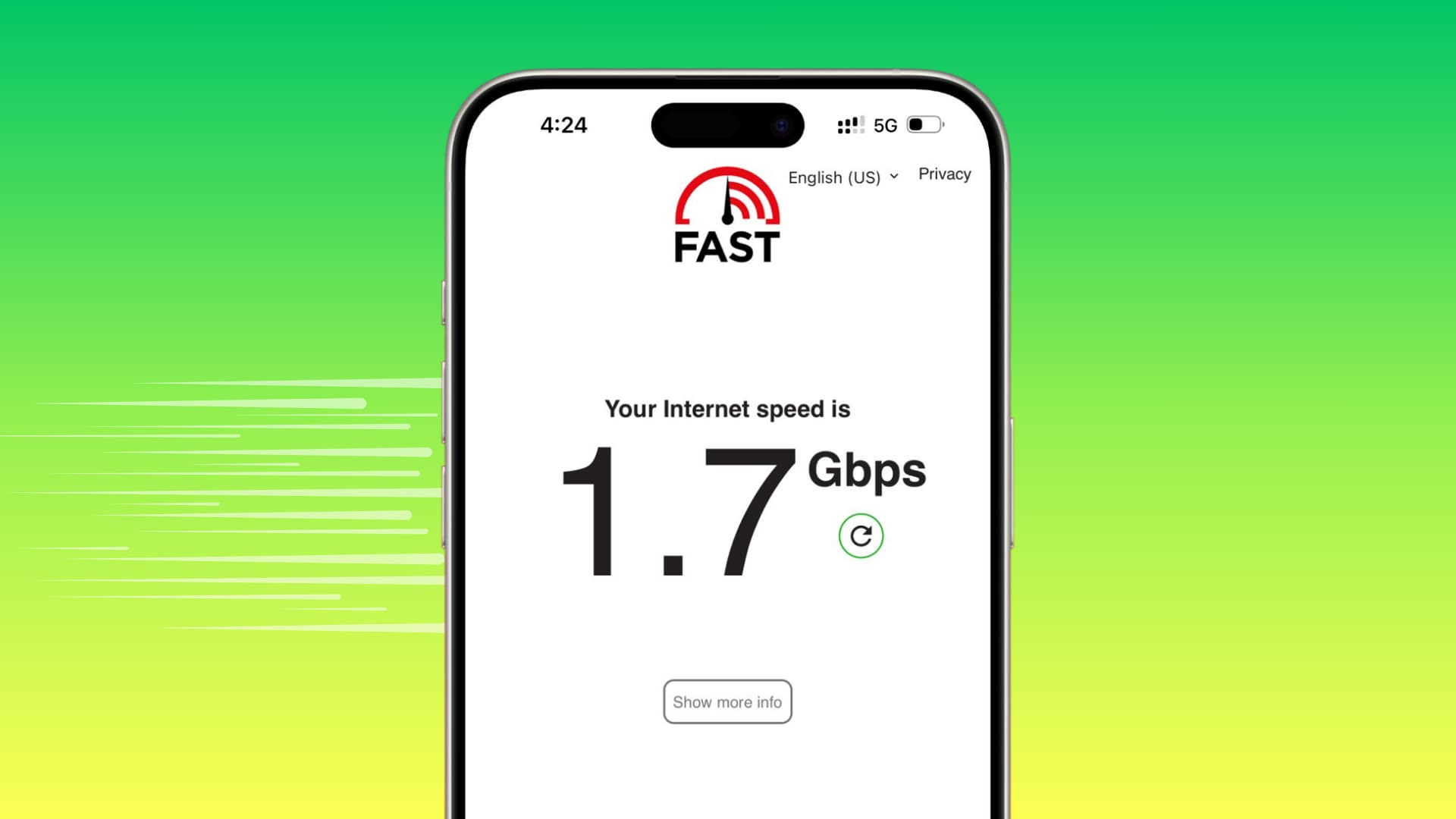
If you have a basic cellular or Wi-Fi plan, you might have enabled some settings that restrict your iPhone from using data extensively. As a result, your phone won’t automatically update apps, retrieve background app data, download large iOS updates, perform background web updates, sync iCloud Photos, or support high-quality FaceTime calls. These restrictions are meant to help you stay within your data limit, but they can also slow down internet speeds.
If you upgrade to an unlimited or higher-tier plan, you may want to disable these data-saving settings.
Note that in some countries, iOS uses the terms Mobile Data or Mobile Service instead of Cellular, so keep that in mind when following the steps below.
1. Switch off cellular Low Data Mode
The most obvious data-saving mode on the iPhone is in cellular settings, which is designed to ensure low mobile data usage for that particular SIM card. Here’s how to access and turn it off.
- Open iPhone Settings and tap Cellular.
- If you use one SIM card, select Cellular Data Options. If you use two or more eSIMs on your iPhone, tap the SIM card you use for cellular data.
- Turn off Low Data Mode. If you use 5G and don’t see it, tap Data Mode and go to the next step.
- Select Allow More Data on 5G if you have an unlimited 5G allowance and want your iPhone to prefer the blazing-fast 5G data over Wi-Fi, which gives you the best internet speeds at all times. Or select Standard if you’re on a plan with a high data cap.
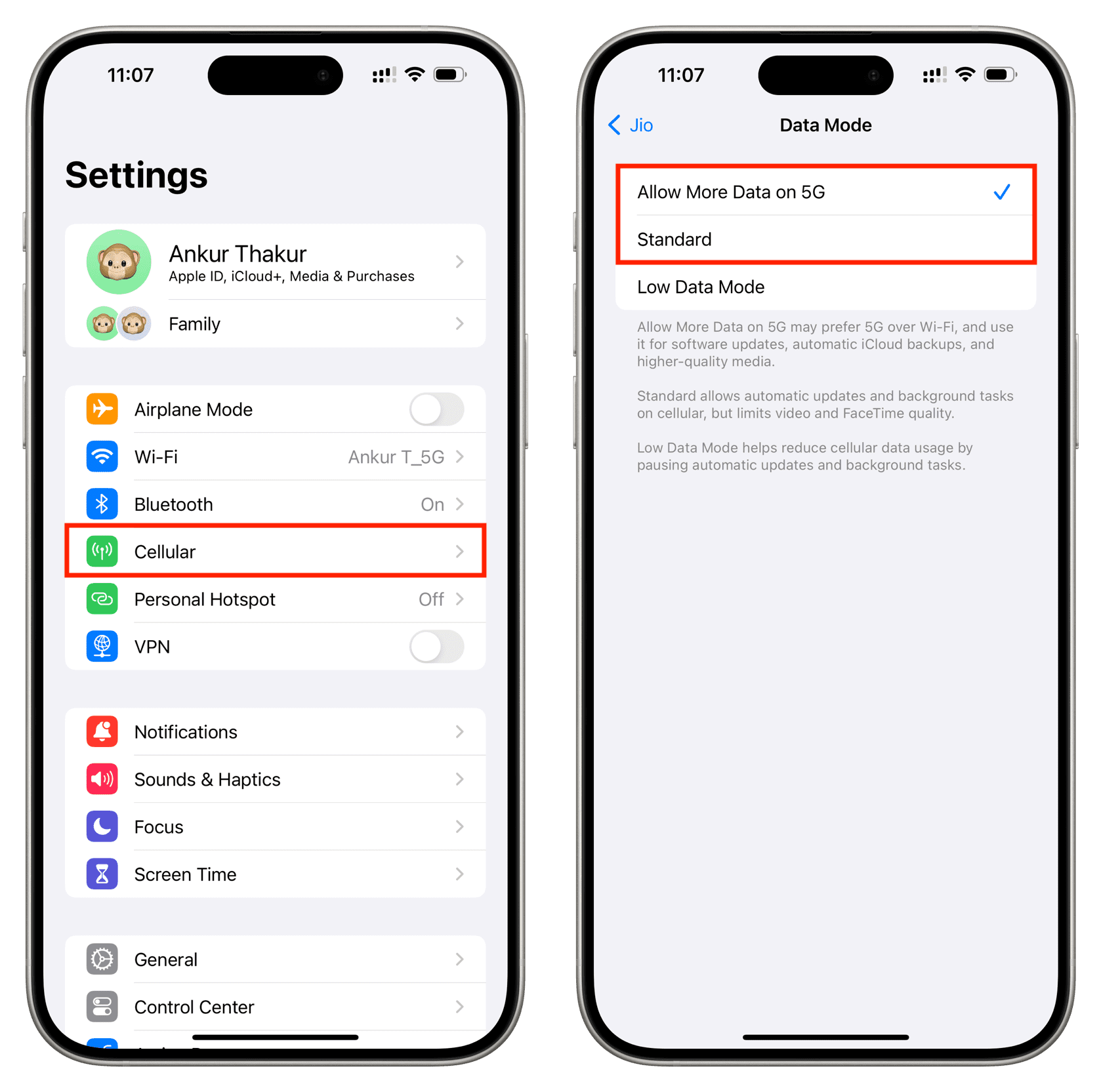
2. Deactivate Wi-Fi Low Data Mode
Similar to Cellular Low Data Mode, your iPhone or iPad can also be set to use less Wi-Fi data on specific networks. If you’re on an unlimited Wi-Fi plan, turn off the data-saving modes to ensure the best speeds and allow your phone to perform all web-related tasks, like updates, downloads, and background fetch, without any restrictions.
- Open the Settings app on your iPhone or iPad.
- Tap Wi-Fi.
- Tap the info icon ⓘ next to the currently connected or a previously joined Wi-Fi network that appears under the My Networks heading.
- Toggle off Low Data Mode.
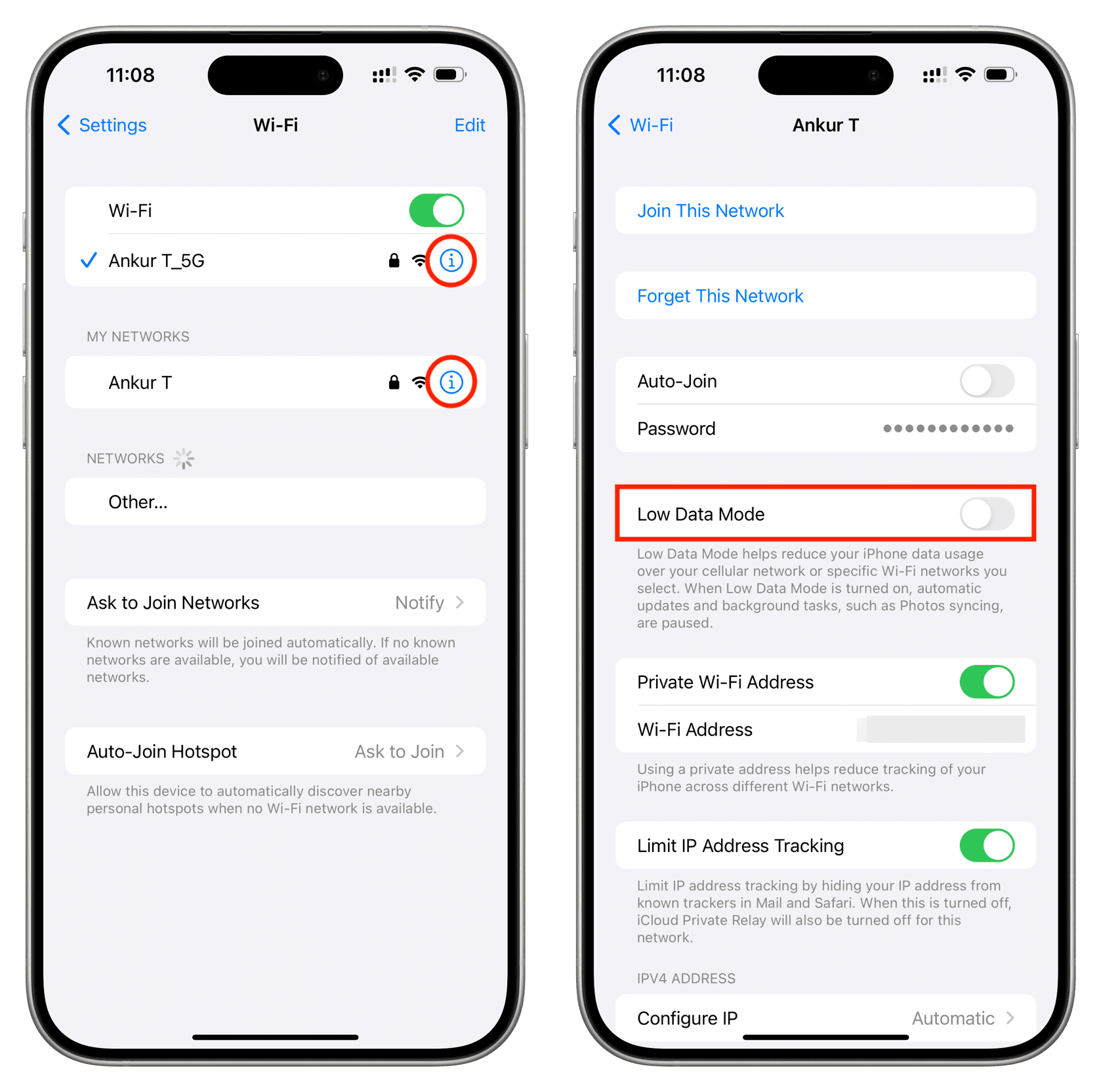
3. Don’t restrict apps from using cellular data
iOS lets you prevent specific apps from using your iPhone’s cellular data. Back in the day, when I was on a limited data plan, I’d restrict data-hungry apps like Instagram, Facebook, Google Photos, etc., from using mobile data. But if you have no data caps and want a hassle-free experience across apps, follow these steps to enable cellular data for all of them.
- Go to iPhone or cellular iPad Settings.
- Tap Cellular.
- Tap Show All under the Cellular Data heading and turn on mobile data access for all apps.

4. Set cellular data to 5G
Follow these steps to ensure you have enabled 5G on your iPhone 12 or later so you are not missing out on the incredible speeds that come with it.
- Open iPhone Settings and tap Cellular.
- If you use one SIM card, tap Cellular Data Options. If you have two or more SIM cards, tap your SIM card name.
- Tap Voice & Data and select 5G On or 5G Auto instead of LTE, 4G, or 3G.
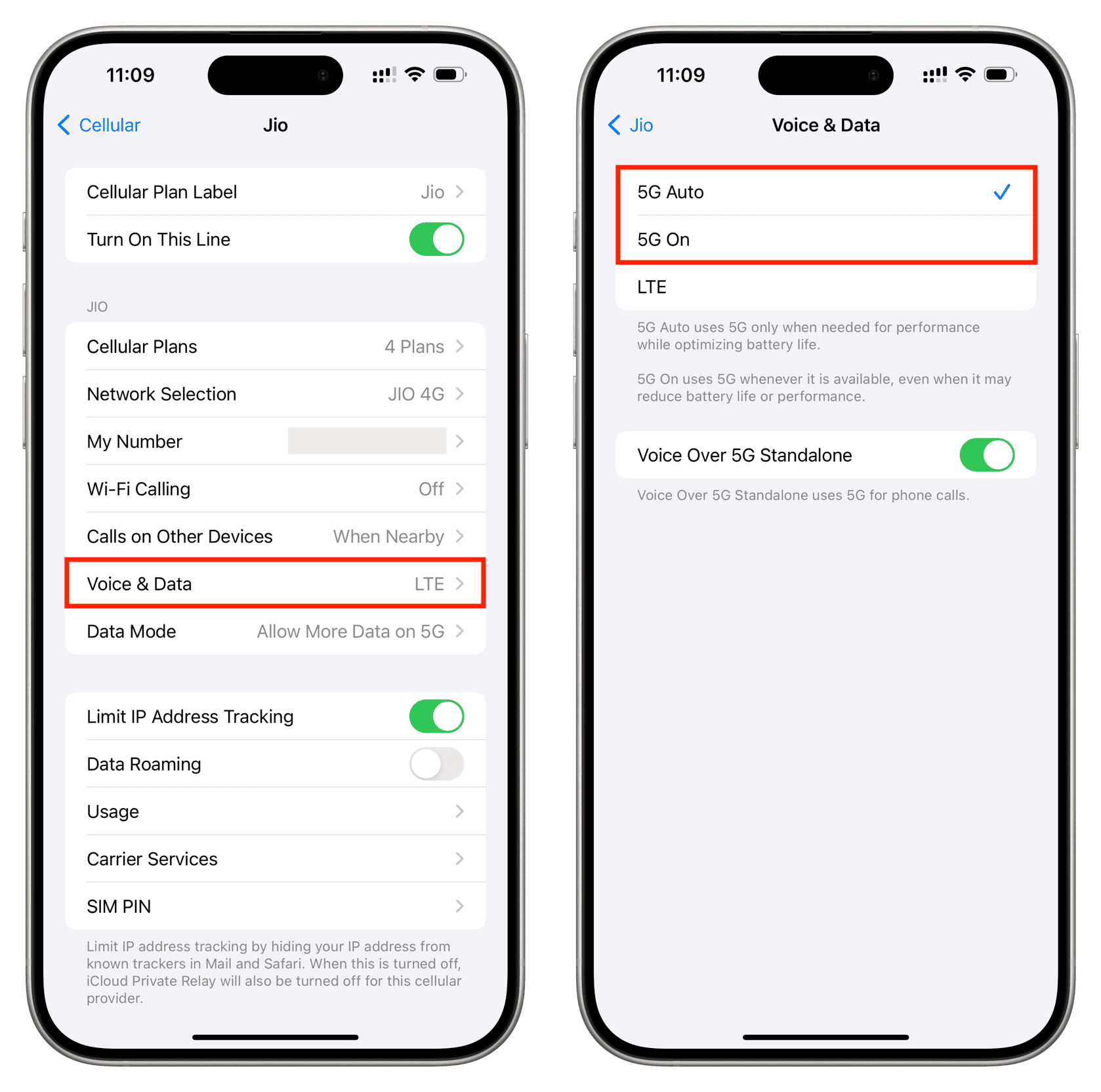
5. Use 5 GHz Wi-Fi band
Most new Wi-Fi routers support 2.4 GHz and the faster 5 GHz bands. Connect your iPhone to the 5 GHz network to get the best speeds.
6. Allow super fast data in Personal Hotspot
We have covered most points related to you getting the best speeds. But what if you’re sharing your iPhone’s cellular data with others?
In this case, if you want the receiver device to get the fastest 5G hotspot speeds from your iPhone 12 or later, go to Settings > Personal Hotspot and make sure Maximize Compatibility is off. When it’s off, your iPhone works like a 5 GHz Wi-Fi router instead of a 2.4 GHz one.
In my testing, I found that my iPhone 15 Pro Max can act like a Wi-Fi 6 router on the 5 GHz frequency band, offering speeds up to 1,200 Mbps to the host device. But when I turn on Maximize Compatibility, the speeds are significantly lower. Here are the numbers from my Android phone when using my iPhone as a Wi-Fi router with Maximize Compatibility turned off and on.
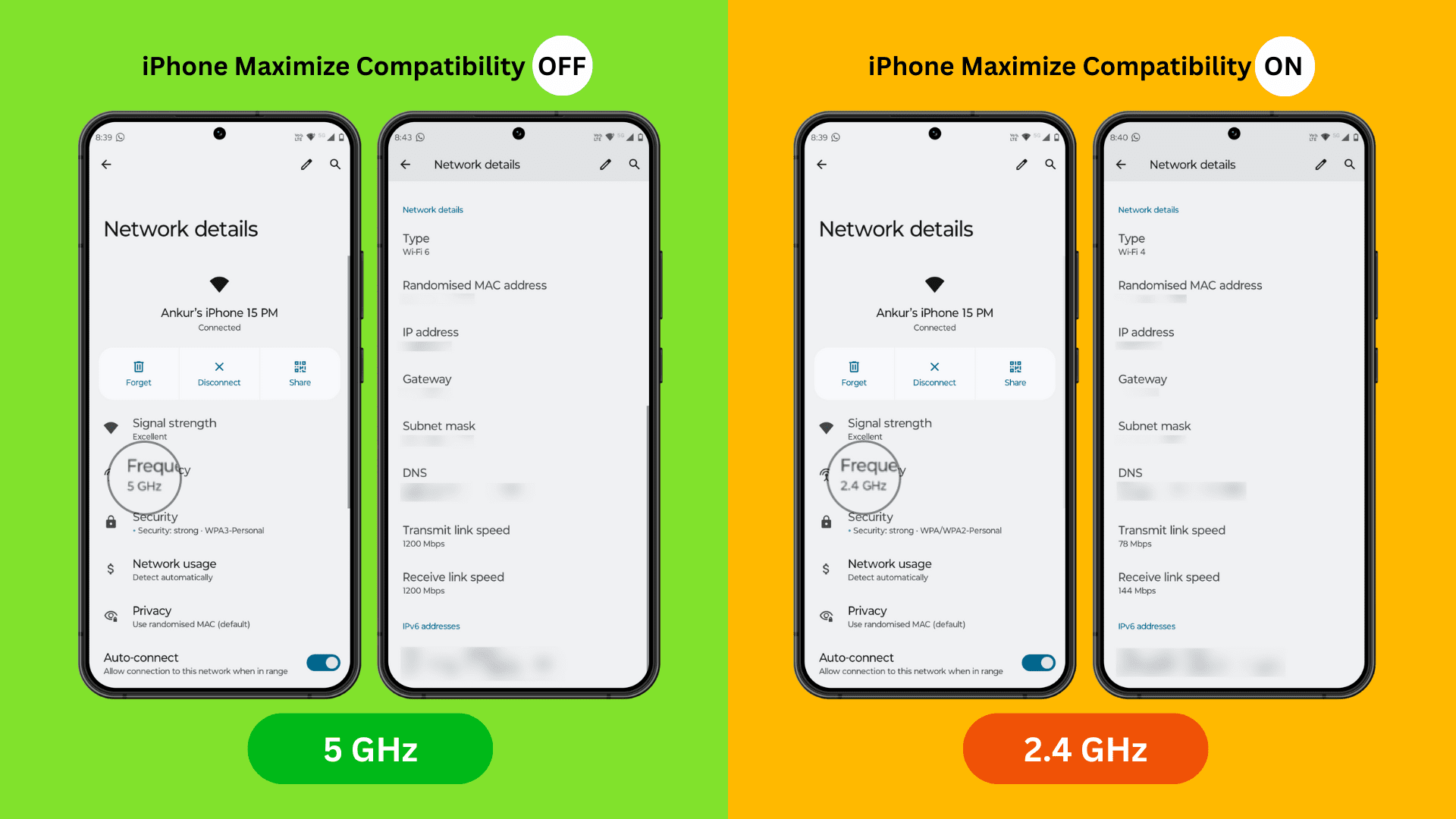
7. Turn off in-app data-saving modes
In addition to iOS-level settings for conserving data, some apps have their own data-saving toggles. If you enable this for an app, it will use less data but may provide a reduced experience. For example, audio and video may stream at lower quality, or browsing your X timeline could take longer to load images and video previews.
The steps to turn off data-saving modes differ from app to app, but in most cases, you should be able to find them inside the third-party app’s settings. Here’s a quick rundown of popular apps.
Apple TV: Go to iPhone or iPad Settings > Apps > TV and turn on Use Cellular Data. Next, set the Cellular and Wi-Fi video streaming to High Quality.
Apple Music: Go to iOS Settings > Apps > Music and adjust the Audio Quality.
YouTube: Tap “You” inside the app and hit the settings icon from the top. Now, tap Video quality preferences and set it to Higher picture quality for both mobile networks and Wi-Fi.
PrimeVideo: Tap your profile picture from the top, then tap the tiny settings icon. Now choose Streaming & Downloading and set Streaming quality to Best.
Netflix: Tap My Netflix from the bottom, then tap the hamburger menu icon from the top, followed by App Settings. From here, set Mobile Data Usage to Maximum Data. You can also adjust the Downloads settings accordingly.
Spotify: Tap your profile picture > Settings and privacy > Data Saver and make sure it’s off. Go back to the main Settings screen, tap Audio Quality, and set it to Very high.
8. Turn off Low Power Mode
Your iPhone may limit some web-based tasks and indirectly save data when Low Power Mode is active. So, turning it off may help.
9. Explore other ways to increase cellular and Wi-Fi data speed
Lastly, for the best data speeds on your iPhone or iPad, check out our tutorials with dozens of other effective tips.